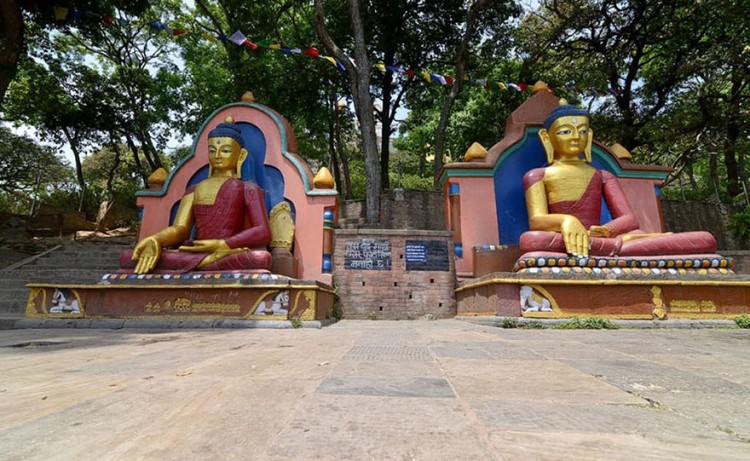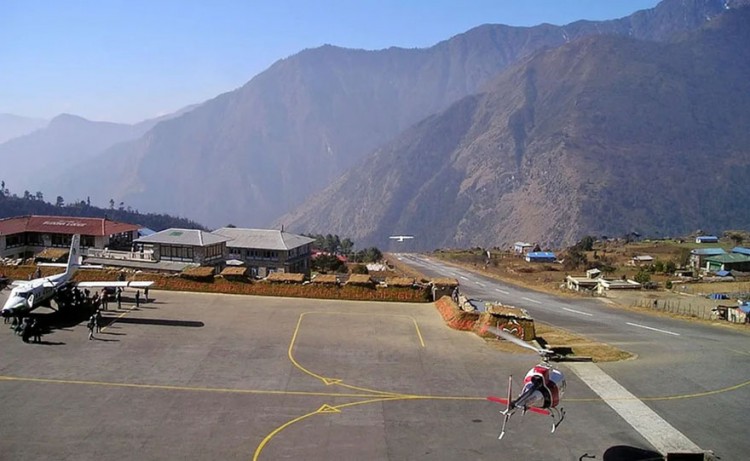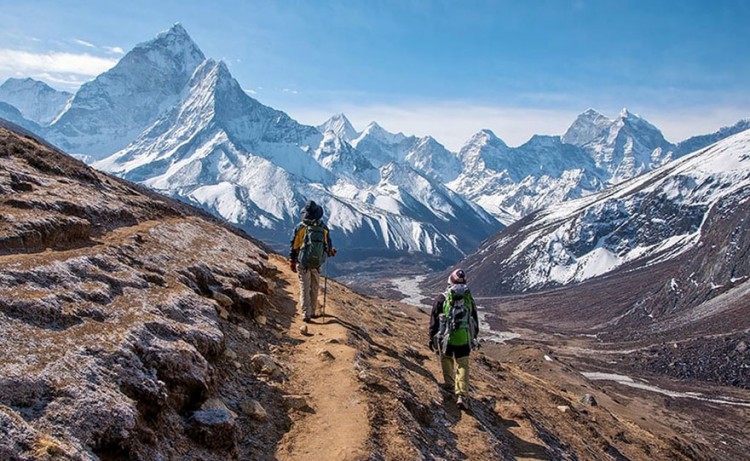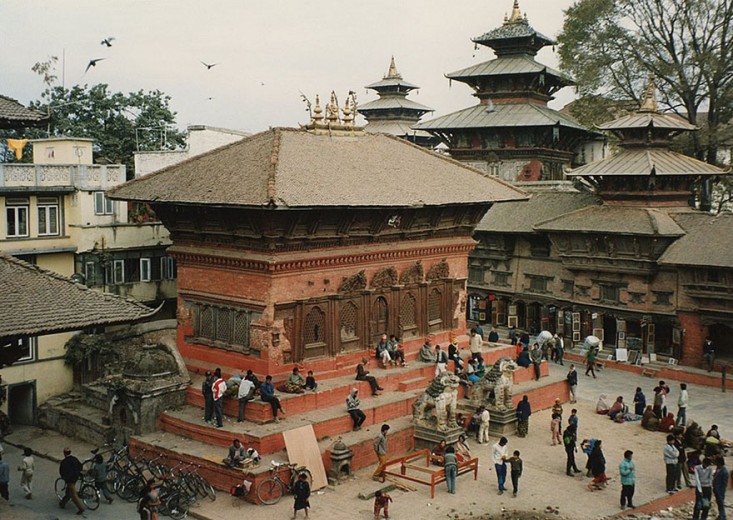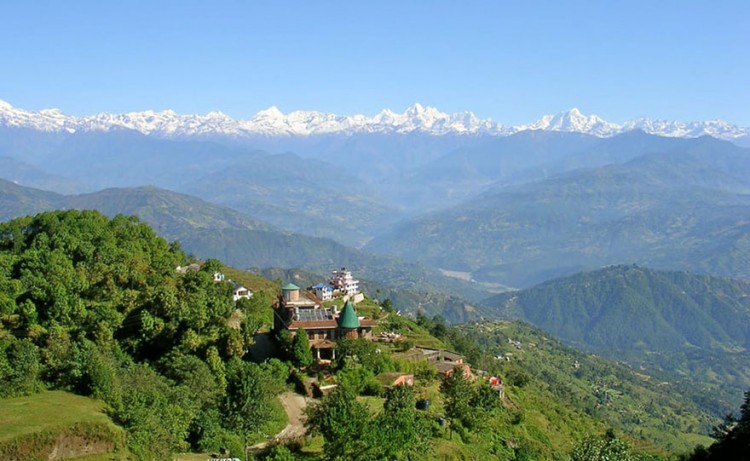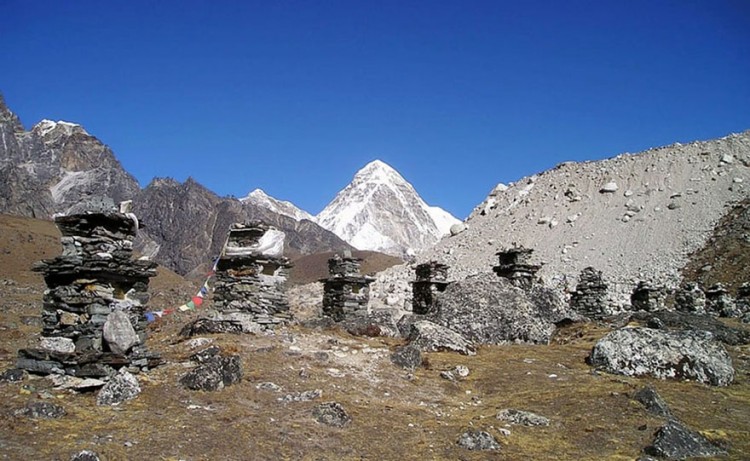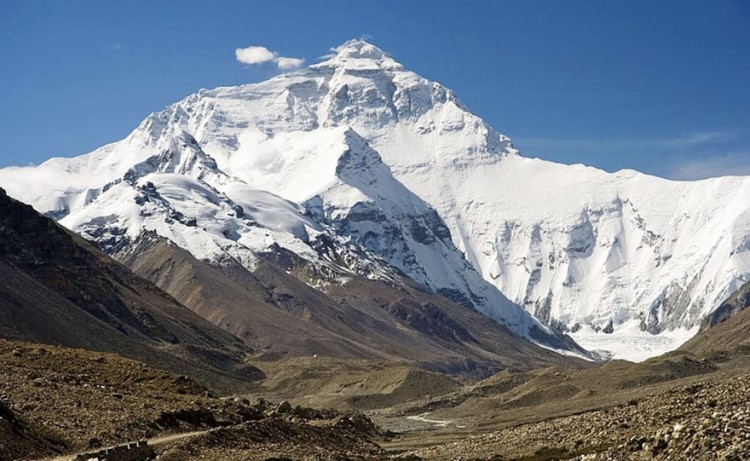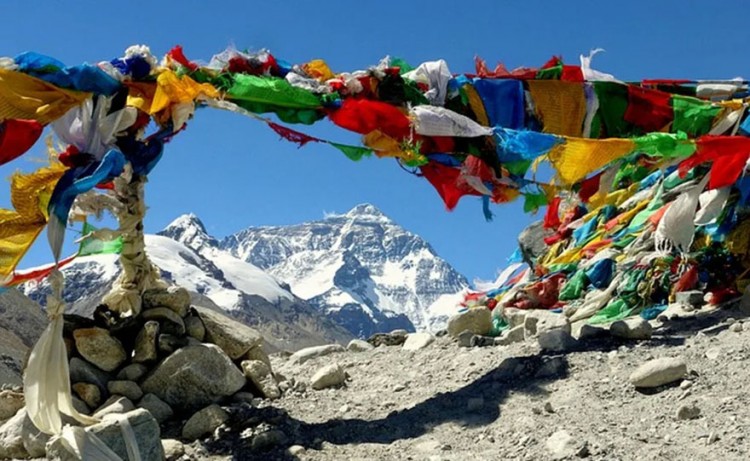About City
Kathmandu
"The City of Peace"
Lying in the magical realm of the Himalayas, Kathmandu is the capital city of Nepal. Being the largest city in the country, the city has no dearth of tourist attractions to fascinate tourists with. People from all around the world visit this tourist destination to find peace and quiet. But, the most important factor that makes Kathmandu a major tourist destination in the region is that it is a part of the kingdom of Himalayas, which ensures a memorable holiday experience.
Kathmandu is a destination where you find peace and comfort which makes it a perfect destination for relaxation. There are resorts in Kathmandu where you can enjoy luxury amenities and all comforts at very affordable tariffs. Waking up to crisp breeze and fiery sunrises, ensuring a day filled with joy and ecstasy; and treating your eyes with magical dusks when the setting sun adds various tones to the sky – such experiences are not uncommon in Kathmandu. The fresh air and the refreshing greenery of the city are exactly what you need to rejuvenate your body and soul.
The city of Kathmandu has held within its ambit uncountable treasures for only explorers to unveil. Whether you wish to cover all the major attractions in the city during your visit or want to tread beyond the beaten path to explore the unexplored, Kathmandu has enough in store for you. Apart from being a place with rich natural biodiversity, Kathmandu also boasts a rich cultural scene with a perfect amalgamation of Buddhist and Hindu cultures. The spectrum of religious places in Kathmandu covers a number of Hindu Temples as well as vibrant Buddhist stupas. The presence of these marvellous structures in Kathmandu makes it a treasure trove of architectural masterpieces. Any architecture buff is sure to have some enjoyable moments in Kathmandu.
Since Kathmandu is located amidst Himalayas, you can be sure of witnessing some visual treats when you are here. Some of the most prominent mountains that add grace to the landscape of Kathmandu are Ganesh Mountain and Langtang Mountain ranges. However, if you move a little further to the nearby places like Nagarkot and Chisapani, you can even get to witness the mightiest of all – Mount Everest and trek to the Everest base camp. That is also the reason why Kathmandu can be found on any photographer’s bucket list, especially in Asia. It is, without a doubt, a scenic place and the landscapes that surround it are perfectly picturesque. Indulging in landscape photography here is definitely going to be a great decision for your Instagram handle.
Kathmandu is also a great choice of destination for adventure junkies as some of the greatest Himalayan treks have their trails lying close to the city. Just visit Kathmandu and embark on a journey of solace and self-discovery in the higher mountains where adrenaline-pumping action awaits you to fill your mind with thrill. However, the list of adventure activities in Kathmandu also covers various other activities like paragliding, boating, camping, and wildlife tours.
The days never get too warm even during summers and the nights do not get too cold even during winters in Kathmandu. The city enjoys an elevation of 4,590 feet, which guarantees a pleasant climate throughout the year, making it an ideal destination for tourism at any given time. However, it is best to visit Kathmandu in October or November because during these months, the skies are clear, the landscapes become verdant and climate is perfect.
Nepal shares borders with China/Tibet to the north, and India to the south, east and west. Nepali is the spoken language of Nepal, although English is widely spoken in all major tourist hotspots.
Places To Visit In Kathmandu
1. Thamel
Thamel has and continues to be, one of the most popular and crowded commercial hubs in Kathmandu City of Nepal. Be it cultural monuments or pubs, cosy restaurants or magnificent temples, the narrow alleys of Thamel has never failed to serve the tourist industry of the country in over four decades. Whether you are looking for good food or clothes, new music albums or in the hunt for trekking gear, the street shops in Thamel have got you covered. The entire area is a wi-fi zone.
2. Swayambhu Temple
Perched on top of the Semgu Hill located in the outskirts to the west of the Kathmandu Valley, Swayambhu Temple temple is one of the most important eligious shrines in the city of Kathmandu. With a wite dome stupa and an array of shrines, this place draws people to it daily. Circumnavigating the temple in a clockwise direction is a common practice among the pilgrims since it is believed to wash away all the sins. The sanctum is one of the holiest sites among the Buddhists and Tibetans and is second only to the Lord Boudha for them.
3. Kathmandu Durbar Square
Kathmandu Durbar Square. The place which has witnessed and received one king after the other as they sat and ruled over Nepal a long time ago, where new rulers were crowned while the steady beats of drums and trumpets filled the place. The regal Kathmandu Durbar Square is one of the three durbar squares in the country. Till date, the place remains the most remarkable legacy of Kathmandu's traditional architecture. Even though the unfortunate earthquake of 2015 took its toll on the building and around half a dozen places within the premises collapsed, it has still retained its original glory. Three squares - A former elephant stable Basantapur square, main Durbar square on the west and another part of Durbar Square that houses the entrance to Hanuman Dhoka which are loosely connected make up the Durbar Square area.
4. Pashupatinath Temple
One of the holiest Hindu shrines in Nepal, the Pashupatinath Temple is stretched across both the banks of the beautiful and sacred Bagmati River on the eastern fringes of the capital city of Kathmandu. The magnificent sanctum devoted to Lord Shiva draws in thousands of devotees who come to offer their prayers and seek blessings from him. Sprawled over a large area with temples and ashrams, it is believed that the Jyotirlinga housed in the Pashupatinath temple is the head of the body which is made up of the twelve Jyotirlinga in India. In 1979, the magnificent temple was declared a UNESCO World Heritage Site.
5. Garden of Dreams
Garden of Dreams in Kathmandu, also referred to as the 'Swapna Bageecha' and 'garden of six seasons is a neo-classical garden in Kathmandu built by Kishore Narshingh in1920. The garden has a magnificent amphitheatre, urns, gorgeous pavilions, paved perimeter paths, pergolas, and ponds that draw in locals and tourists alike.
6. Boudhanath Stupa
Situated at a distance of about 11 kilometres from the city centre of Kathmandu, Boudhanath Stupa dominates the Kathmandu skyline with its gargantuan spherical shape. Thousands of pilgrims from different religions gather here daily. They perform a ritualistic circumnavigation, known as the 'kora', of the colossal dome. It is believed that anyone who circumambulates the stupa with no ill thoughts in their hearts receives good karma. Moreover, the gates of hell are permanently closed for them!
7. Kumari Bahal
Kumari Bahal, the palace where the Kumari lives while she is the chosen Devi, is a beautiful ancient palace. It is a three-story traditional structure made of wood and red bricks with intricately carved windows, doors, and balconies which quite resemble a Buddhist Vihara. This structure was built in the mid-1700s by Jaya Prakash Malla and also houses a stupa with symbols of Goddess Saraswati and a huge chariot that is used to take the Kumari around the city during the annual festival of Indra Jatra.
8. Casinos
Kathmandu has many exciting casinos to offer to its tourists. The best thing is that these casinos are open on all days of the week for 24 hours! These high-end casinos have amazing packages to lure customers along with the free flow of drinks and much more. And there have been many tourists who have won handsome amounts. So, be the next one to follow up and return home as a millionaire.
9. Kopan Monastery
Located on the picturesque Kopan Hills (20 minutes drive from the city centre) on the fringes of Kathmandu, Kopan Monastery is a stunning Tibetan Buddhist Monastery established between the late 1960s and early 1970s by the founders of the Foundation of the Preservation of the Mahayana (FPMT). It is a well-known tourist attraction and draws people who are interested in learning Tibetan Mahayana Buddhism. One can choose to enrol in a short-term (7 days) course to get a gist of this ancient way of living. The facilities are humble but ensure that everyone leaves feeling calm and composed.
10. Narayanhiti Palace
Located to the east of the famed Kaiser Mahal near Thamel, the Narayanhiti Palace Museum is a former royal palace which was home to the monarchs of Nepal. The stunning museum showcases the old furniture, art pieces, ornaments of the royal family and lavish lifestyle once adorning the durbar (halls) of the exquisite palace.
11. Langtang National Park
With trekking trails, lush greenery, and a variety of species of flora and fauna, the Langtang National Park is the fourth national park that was established in Nepal in 1976. The Langtang National Park is situated at an approximate distance of 32 kilometres to the north of the capital city of Kathmandu and is connected to the Qomolangma National Nature Preserve in Tibet.
12. Budhanilkantha Temple
Budhanilkantha Temple is an open-air shrine located at the foothills of the Shivpuri Hill in Kathmandu Valley. It is dedicated to Lord Vishnu and houses an exceptional idol of the presiding deity seen in a reclining posture in a pool of water. It is the largest stone statue in Nepal that attracts not just devotees but also tourists in large numbers, especially during the occasion of Haribondhini Ekadashi Mela which is held annually on the 11th day of Kartik month of the Hindus (October/ November).
13. Asan Tole
Asan Tole is a famous market street in the city of Asan, Kathmandu. The six spoked juncture of the street is always bustling with people selling everything from vegetables and fishes to clothes, jewellery and spices. It is a place where one can experience the daily life of Nepali people.
14. White Monastery
White Monastery or Seto Gomba, also known as Amitabha Monastery, is a Buddhist Monastery in Nepal, offering a mix of religious importance and natural anesthetic. The vivid terrain and the lush green landscape of the surrounding make the sunset and sunrise here, a treat to watch. Visitors can observe the whole of the Kathmandu Valley from this place. The soothing atmosphere draws most travellers wanting to soak up some tranquillity after exploring the bustling city of Kathmandu.
15. Basantapur Tower
Basantapur Tower was the tallest tower in Kathmandu Durbar Square once. Basantapur Tower is an 18th-century monument built during the reign of King Prithvi Narayan of the Shah Dynasty. It has nine storeys, the top two floors of which were destroyed in the 2015 earthquake that hit Nepal. The levels have been restored, and tourists can explore the tower from the outside and the inside. Most of it is hidden behind scaffoldings, and one needs to take a closer look to see the ancient carvings on the restored wooden structure. The entrance is through Lohan Chowk up a narrow staircase, and one can enjoy a fabulous view of Kathmandu through the windows on every floor.
16. Hanuman Dhoka
Once the royal palace of Malla kings and Shah dynasty, Hanuman Dhoka is a complex of ancient structures with some as old as mid 16th Century. Located in the Darbar Square of Kathmandu, it is locally known as Hanuman Dhoka Darbar, the name of which is derived from an antique idol of Lord Hanuman near the main entrance of an ancient palace. 'Dhoka' means door in the local language. Spread over an area of 5 acres, Hanuman Dhoka was severely destroyed during the earthquake in 2015.
17. Taudaha Lake
Located on the outskirts of Kathmandu, Taudaha Lake is a famous freshwater lake surrounded by hills covered with dense forests. The lake is full of fishes and is also a heaven for birdwatchers because of the migratory birds in the area. As per a legend, Taudaha is one of the lakes that were formed from the waters of a large lake after a mythical character cut the hill behind it and let the water flow away.
18. Siddhartha Art Gallery
Siddhartha Art Gallery, home to a wide range of contemporary Nepali art, was established with the intention of providing a platform to the native artists for displaying their works. For the past twenty years, the gallery has been continuously striving to promote contemporary art in Nepal and work as a catalyst for change to support the artists. They also provide services for the investor in art through evaluation and restoration of artefacts. It is the best place to be for art lovers and for those who wish to know and understand the history of the evolution of Nepalese art.
19. Phulchoki
Phulchowki is the highest hill located in Kathmandu Valley (2791 metres) known for its hike. The mountain is covered by a natural garden full of beautiful wild roses, yellow jasmine, iris and other native flowers. It takes a few hours to reach the top and return and is, therefore, much advisable to those who are travelling on a time crunch. The climb through the rough terrain covered with dense forests will be worth it after one reaches the top and gets to see the breathtaking view of the valley.
20. The Last Resort
The Last Resort, perched on top of the elevated gorge is located three-hours away from Kathmandu. The Last Resort is Nestled amid terraced slopes with Bhote Kosi River flowing closeby. This magnificent resort is perfect for relaxing, undertaking adventure activities, lounging at the plunge pool or reading the book amidst the beautiful nature.
21. Kathesimbhu Stupa
Located in the heart of Kathmandu, the Kathesimbhu Stupa is famous for being the copy of the Swayanbhunath Temple. The courtyard, also called the Swayambhunath Complex, is quite a surprise when tourists find it while exploring the region. It comprises of a stunningly grand 16th-century stupa installed in between smaller stupas. The entrance is marked by a concrete gate, and there are no compound walls to the attraction.
22. Dakshinkali Temple
Situated at a distance of 22 kilometres from Kathmandu, the Dakshinkali Temple is located only a kilometre away from the village of Pharping. The place of worship is one of the most important temples in Nepal and is dedicated to the fierce and feared Goddess Kali. The fame of this temple lies in its rituals and traditions. Twice a week, animals are sacrificed at this religious place - uncastrated male goats and cockerels in particular – as an offering to the ferocious spouse of Lord Shiva. The temple was built in 1855 by Rani Rashmoni, a devotee of Kali.
23. Patan
Patan is the third largest city in Nepal right after Kathmandu and Pokhara. It is now known as Lalitpur. Both names Patan and Patan are derived from the Sanskrit word ‘Lalitapattan’. The city is located just across the river Bagmati from Kathmandu. Patan has a Durbar Square that is full of statues, temples, and palaces. In addition, Durbar Square also has the ‘Patan museum’ which is a must-see attraction. It is a traditional centre for handicrafts and is also a place to purchase traditional jewellery, Buddha statues, and masks.
24. Indra Chowk
Indra Chowk is a bustling maze of streets in Kathmandu that tourists can witness. Located on the India-Tibet trade route, it is a bustling commercial and ceremonial area having many shops where the local traders sell fresh regional produce. The moving crowds, the colourful shops and the sounds of this bustling marketplace are unique to Nepal. Observe the carved doors and windows of the shops and houses or just grab of Lassi. During the festive season, Indra Chowk becomes a ceremonial place, and several religious processions go through it.
25. Kala Bhairav
Kala Bhairav is a grand temple located at Kathmandu Durbar Square in the religious complex of Hanuman Dhoka, dedicated to a fierce manifestation of Lord Shiva. In this form, the lord is depicted carrying the decapitated head of Shani, wearing an ornamental snake, tiger skin, and a ritual apron made of human bones. The place of worship is an open-air area in the complex and has a gigantic 12-foot tall idol of Kala Bhairav sculpted in the 6th century and is regarded as the largest in the world. The idol and the structures that surround it are made of stone and were carved in the 5th century. It was discovered by King Pratap of the Malla dynasty amidst paddy fields in the 17th century.
26. Jagannath Temple
Jagannath Temple, located in the very famous Kathmandu Darbar Square, is most famous for its architecture and religious significance. One thing that draws tourists in large numbers is the exquisite erotic carving all over the structure. It was built in the early 16th century during the reign of King Mahendra of the Mala dynasty and is one of the oldest shrines in the city. From what remains now, one can get a gist of how fascinating the structure would have been. It is a two-storey building raised over a platform and built in the traditional pagoda-style architecture mostly made of wood and bricks. Some parts of the temple were damaged in an earthquake in 2015. However, some portions have been restored and open for the tourists to explore.
27. National Museum of Nepal
Also known as the Rashtriya Sangrahalaya among the locals, the National Museum is one of the prime attractions situated in the capital city of Nepal, Kathmandu. This century-old museum has preserved and revered the exhibits through all these years to uphold the rich historical significance of Nepal. Home to three buildings - the Historical Museum Building, the Buddhist Art Gallery, and the Juddha Jayatia Kala Shala - this monument houses cultural, historical, and philatelic sections, including weapons, artworks, coins, statues, postage stamps, and several species of plants and animals.
28. Vajrayogini Temple
Located on a hilltop, the Vajrayogini or Bajrayogini Temple is a Tantrik Temple dedicated to the Buddhist Tantric Goddess in Nepal. It is also known as Bodhisattva's Temple and is situated in Sankhu, a small place in the Kathmandu Valley. One needs to climb a stone stairway to reach the temple complex, but once there, every visitor is bound to be fascinated with the beauty of the ancient temple complex that includes stonework, wood carvings, metalwork, smaller temples, caves and a stupa belonging to the time of Buddha Shakyamuni.
29. Taleju Temple
The magnificent Taleju temple, located in Durbar Square of Kathmandu, is dedicated to the clan Goddess of Malla kings, Devi Taleju Bhawani. Traditionally, entry into the temple was restricted to kings but has now been extended to the Hindus. It is believed that the temple was constructed in the shape of a Yantra (a form of Mandala) as was directed by the Devi herself. In the middle of Durbar Square, the temple, set atop a pedestal, is a stunning sight. The Degu Taleju Temple is not open to all. However, on the ninth day of Dasain, the Hindu Devotees can enter to offer prayers to the Goddess. Everyone else can explore the shrine from the outside.
30. National Botanical Gardens
The national botanical garden is located at the base of Phulchowki hill, covering an area of 82 hectares and is surrounded by beautiful evergreen natural forests. Various indigenous plants such as ornamental plants, rock plants, rose cultivars, trees and shrubs, lilies, ferns, medicinal plants and native flora, aquatics, cacti, orchids are housed here for display.
31. Akash Bhairav Temple
Akash Bhairav is also known as the 'Lord of the sky'. Located merely 5 minutes away from Kathmandu Durbar Square, devotees worship Akash Bhairav with great dedication because it is believed that worshipping him ensures strength, safety and goodwill for Nepal and its people. Indra Jatra, an annual 8-day festival devoted to the god, is also celebrated with great enthusiasm. Followers from all over the world come to Kathmandu to be a part of the important pooja rituals performed during this time of the year.
32. Seto Machindranath Temple
Seto Machindranath Temple is a Hindu and Buddhist temple located in Jana Bahal. The temple is believed to be built around 10th century and houses the idol of Seto Machindranath, also known as Janabaha Dyo. During the month of Chaitra, a three days long chariot procession festival of the Lord is held here.
33. Tribhuvan Museum
Located inside the Hanuman Dhoka Palace, the Tribhuvan Museum contains the personal artefacts of Nepali King Tribhuvan Bir Bikram Shah. This part of the palace was built in the late 19th century and suffered huge damage during the 2015 earthquake. It is believed that the Late King used to sit here and observe the problems and prosperity of his people.
34. Shiva-Parvati Temple
The glorious temple of Lord Shiva and his Consort Goddess Parvati, the Shiva Parvati Temple is located in the religious area of Durbar Square. It is as important as the Kumari Bahal or the Kasthamandap and is often visited by pilgrims and tourists. Built in 18th century by Bahadur Shah, every inch of the temple wall is covered in immensely intricate carvings. From a distance in the outer portion of the Durbar Square, one would notice someone looking down a window of a two-storey pagoda style building that opens into a courtyard. It is, in fact, the idols of Shiva and Parvati installed in the window right in the centre of the top floor of the temple. The striking idols coloured in white and blue are seen wearing colourful accessories and blessing the visitors.
35. Kaiser Library
Kaiser Library or Keshar Library is located in Kathmandu's Kaiser Mahal, containing over 45,000 books from the personal collection of the Field Marshal Kaiser Shumsher Rana. It was established in 1969 and has a wide range of books covering subjects including history, law, art, religion, philosophy, etc. It was as a famous tourist attraction, but after Nepal was struck by an earthquake in 2015, the library took a major hit. Although the ground floor has been restored and opened to the public, the grandeur of the place is more or less lost. One may still visit to check out the collection of books and artefacts that were recovered and restored.
36. Stone Inscription
The stone inscriptions in Kathmandu, dates back to Licchavi period from 5th to 9th century, and are regarded as the primary source of Nepal? history. They mostly consists of royal edicts, dedicatory notes on Hindu and buddhist Temples walls, stupas, statues, water spouts and other architectural structures. The inscriptions are multilingual and are written in Nepali, English, French and Persian.
37. Casino Royale
Located in the heart of Kathmandu, Casino Royale is set inside hotel Yeti & Yak, surrounded by enchanting fountains, beautiful gardens and with the decor in royal gold. The warmly lit red-carpeted entrance might make one feel like a celebrity. As one strut ahead, they would notice how the sounds of slot machines, cards, chips and the chatter on the gaming tables stimulate their senses. The ambience quite resembles a carnival and is perfect for those interested in trying their luck at the games.
38. Annapurna Temple
Annapurna Temple located at Asan Tole, Kathmandu is dedicated to Goddess Annapurna, the Goddess of abundance. Her name stands for Food (Anna) and Fulfil (purna) and symbolises that her blessings fulfil every wish and always provides abundance. At the glorious temple, an old bowl full of grain sits at the centre, representing the Goddess. It is believed that walking around the shrine, touching a coin to the heads and then throwing it into the temple will bring prosperity and abundance of all worldly goods.
39. Chandragiri Hills
Lying southwest of Kathmandu Valley, Chandragiri Hill is among Nepal's most-loved day trip destinations. The hill is famous for offering panoramic bird's-eye views of Kathmandu Valley and the Himalayan ranges from Annapurna to Everest. There is a charming namesake resort surrounded by a quaint town of mountain dwellers and an ornate Hindu Temple on top. The world-famous Chandragiri Cable Car runs above stunning mountains from here to Thankot.
40. Nagarkot
Nagarkot is a scenic hill station and hiking destination located a 28-kilometre drive away from Kathmandu. This hill station is known for its views of the Himalayas, including eight ranges and Mount Everest, which are spectacular at sunrise and sunset. In addition, several trails lace the scrublands of Nagarkot, home to exotic birds. The most visited spots here include the pagoda-style Changunarayan Temple, Nagarkot Nature Trail, and Geodic Survey Tower.
41. Villages in Kathmandu Valley
Kathmandu constitutes not only magnificent mountains but also hundreds of ethnic villages rich in culture, flora and fauna, and natural splendour. One can visit at least twenty of them within just a few days in Kathmandu Valley, including the sacred Badimalika Village and its temples, Chisapani Village, Balthali Village and their trekking hubs and Chhusang Village on the way to Upper Mustang. Chomrong Village, occupied by the elite Gurungs, sits behind Annapurna.
42. Fly Past Everest
Fly past the planet's highest mountains with Everest flight tours, an incredible experience in the Himalayas over 8,850 metres above sea level. Buddha Air is Nepal's largest airline operator providing close-encounter Everest flight tours every morning from Kathmandu. All passengers are guaranteed window seats overlooking the snow-laden ranges and guides explaining the peak names and their geographical and spiritual significance. Tickets cost NPR 21,906.
Places to visit in and nearby Kathmandu
Pashupatinath Temple
Boudhnath
Nagarkot
Pokhara
Patan
Swayambhunath Temple
Bhaktapur
Chitwan National Park
Changu Narayan Temple
Hiking Around Kathmandu
Hikes are comfortable walking or climbing trips, usually ending in a day or two. If you're in Kathmandu for a short while but still want to get a whiff of pristine mountain air, a hike is your best bet - they're cheap, noteworthy, gorgeous and do wonders for your health as well! Discover the 10 best trails for hiking in Kathmandu, and choose the one you like the most. Strap those hiking boots on!
1. Amitabha Monastery Hike
Amitabha Monastery is also called Seto Gumba, which means 'White Monastery' in the local language. The breathtaking monastery is made of white stones, giving it a pristine façade. The walls are decked with local murals and frescoes that depict the life of the Buddha and the Buddhist culture. The monument is also home to sacred statues made of medicinal clay. The Stupa looks breathtaking during sunset! The route is much-frequented, so you are bound to find some trusty hiking companions as well.
2. Kakani Hike
This gorgeous route takes you right through the alpine forests, to Kakani - a small village near Kathmandu. The trail is easy, gravely and has a very slight incline, making it easy to hike. If you want to rest, there are numerous picnic spots and roadside shops to take a quick break. Don't forget to try the local cuisine at Kakani!
3. Phulchowki Hike
Phulchowki is the highest hill in Kathmandu valley, which means that the views from the top are sure to be astounding! You are bound to find hikers with you as you try to scale this hill. Your hike is punctuated by snow-capped mountains, exotic birds and towering mountains on all sides. Once you reach the village, spare a visit to the Botanic Garden to spy some colourful, eclectic plants. You can also stay in hotels or camp at designated locations.
4. Nagarkot Hike
This hiking trail is preferred by enthusiasts because of the scintillating views of the Himalayas at Nagarkot. The Newari village Of Sankhu is the starting point of the trek. Feel free to explore the culture and cuisine before you head out to Nagarkot. You also have the option of camping out at night.
5. Sundarijal Hike
This trek is the easier option to explore some wild terrain, simple inclines and beautiful scenery. The path goes through Shivapuri National Park, which makes for some amazing views. If luck favours you, you may spot some animals as well! You can extend your walk to the Chisapani settlement, to get a feel of the local tribal culture.
6. Shivapuri Hike
This is the first phase of the previous trek that you can either drive over or choose to walk. This trail has a steeper incline, but is totally worth it, for the sights that await you on this hike are truly one-in-a-million. If you tire out too soon, you can always hitch a ride on a pony or a jeep. The Budhanilkantha temple is said to possess great power and has wish-granting abilities, while the Nagi Gompa is a centre of quiet reflection.
7. Namobuddha Hike
This Buddhist shrine holds high significance for tourists and devotees alike, as it depicts the story of Mahasatta, a prince who fed himself to a tigress and her cubs. The Stupa at Namobuddha radiates peace and calm and is a must-visit. You can follow a small river from the town of Panauti, which looks breathtaking. If you're lucky, you'll find Nepali farmers in action and maybe help them out too!
8. Champadevi Hike
The Champadevi trek is super famous because it is equal parts adventurous and rewarding. This takes you through a dense pine forest with stunning views. You will reach a quaint monastery at the end, where you can sip on hot milky tea. Don't forget to take a map along!
9. Chisapani Hike
The Chisapani hike is a local favourite because it takes you through the Shivapuri National Park, Chisapani village and dense forests, all under four hours. You are sure to fall in love with the simple village, which is set against the magnificent backdrop of the towering snow-capped mountains of the Himalayas. You may even be able to spot animals in the forest!
10. Nagarjuna Hike
This location holds great historical significance because this is the location that Manjushree, a Chinese saint, first laid eyes on what was to become Kathmandu Valley. An earlier record shows that the Buddha also came to Nagarjuna cave. The Water Garden, a little south of Nagarjuna, is also a must-visit. This exquisite location offers a great range of history, nature and aesthetic beauty! The Padmasambhava Monastery is a small den where hikers can rest and speak to the monks on a wide variety of topics.
Things to Know While Hiking in Kathmandu
1. Always carry travel essentials on your person - a first-aid kit, water, health bars, flashlight, knife and rope
2. If you plan on staying over, carry camping gear as well
3. Carry insect repellant, sunglasses, comfortable clothing, a lighter, matches, portable charger and other toiletries as well
4. Take care to not litter. Do not throw waste or plastics around, and dispose of responsibly. Remember that you are hiking in the wild
5. Do not attempt to feed or befriend any animals you may encounter
Carry necessary permits
6. Carry local currency as small shops may not accept international currencies. In this case, keep coins and notes of the Nepali Rupee - NPR
7. Plan your trip ahead of time - keep the weather in mind
8. If this is your first time hiking in Nepal, going with a group is advisable
9. Always carry a local map with you, with detailed trails. Map your entire journey out before you start
10. Be considerate to locals, and respect their culture when it comes to attire, etiquette and cuisine
11. Beware of misleading guides - always hire a guide who is certified by the government. Ask for identification
The best way to fall in love with Nepal is to experience it in all its glory. Hiking gives you that opportunity, as it is cheaper, easier, quicker and sometimes even more rewarding than trekking. Next time you're in Nepal, take a day off and embark on an adventure. Explore Kathmandu on your feet for some unforgettable memories! Which trail calls out to you? Which path do you plan on treading? Let us know! Take the road less taken!
Visiting Kathmandu is easy as there are many Travel options
By Air
Nepal has one international airport, Tribhuvan Airport. It is located in East Kathmandu, Bagmati Pradesh, Nepal.
By Train
Taking a train from India (New Delhi to Gorakhpur) followed by a bus to the border is a viable option. There is also an existing rail route between India and Nepal that commences at Jayanagar in Bihar till Janakpurdham, in Nepal’s Mithila region.
By Road
Buses to and from other parts of Nepal including Kathmandu, Nagarkot, Pokhara and Chitwan and also to neighbouring countries India operate in Nepal. Kakkarbhitta (West Bengal), Biratnagar (Bihar), Birgunj (Bihar), Sunauli, Nepalgunj, Dhanagadi and Mahendranagar (from Uttar Pradesh border) are all border towns that are entry points into Nepal by road. Take a bus or a cab or even drive in (Indian Nationals do not require a visa).
Best time to Visit
The best time to visit Nepal is from October to December. However, it also depends a lot on the kind of activity or the places within the country that one hopes to explore. The autumn months of October and November is touted as the best time for trekkers who are rewarded with clear skies and breathtaking views.
The next best time to visit Nepal is in the spring season from March-April. The rhododendrons are in bloom, and the temperatures are warm, yet not scorching hot. For those wishing a vacation in Kathmandu and low-lying areas, the winter months are ideal.
December to February: This can be very cold, especially at night, with average temperatures of 6°C in Namche Bazaar. But you’ll be rewarded with clear skies, incredible panoramas and quieter trekking trails, as there are fewer visitors. High altitude trekking is not recommended at this time. You can also visit the place in the month of February for it augments spring season when the air is refreshing and you can find flowers and fruits in plenty.
March to May: The temperature in spring is mildly warm in low lands while moderate in higher altitudes with plenty of opportunities to have a tryst with the mountain views.
June to August: This is also the monsoon season in Nepal. The weather is hot and wet at times. It rains almost everyday with occasional thunderstorms in the evening.
September to November: The is the best time to visit Nepal, when the skies are a clear blue and the views spectacular. It is the festival season as well and so you can find gaiety in the air. The weather remains dry until about April, with temperatures varying between regions.

